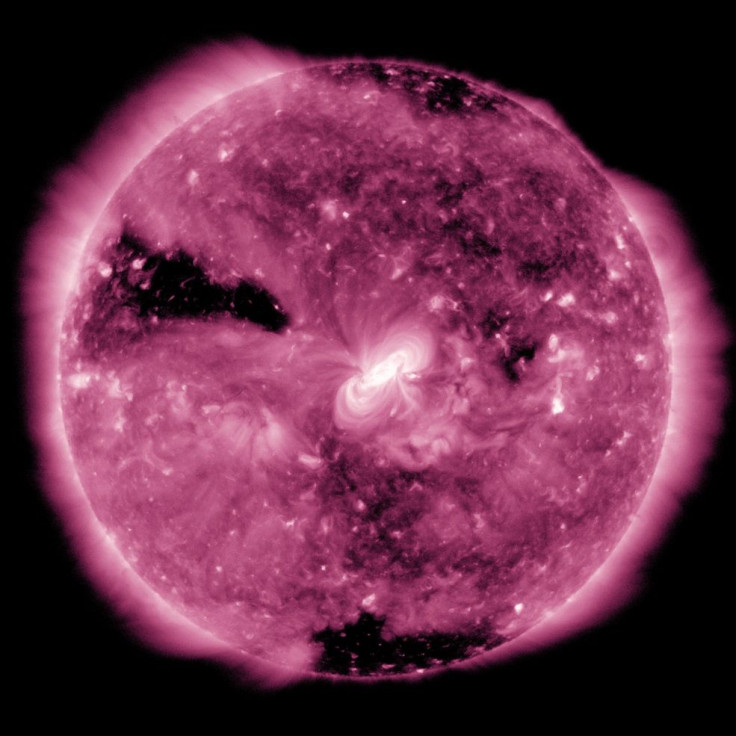NASA Observatory Captures Solar Eclipse In Space

It’s never a good idea for humans to look directly at the sun with their eyes unprotected, but NASA’s Solar Dynamics Observatory has the retinal remedy. The SDO captures images and views of the sun that humans could never see with the naked eye even if they tried.
On Sunday, while the SDO was checking out the sun it captured a total solar eclipse in space when the Earth passed between the SDO and the sun. This is called a transit, basically the same thing as an eclipse, but more broadly, a transit occurs simply when one object in space passes in front of another object in space, according to NASA.
Our Sun-watching satellite saw an eclipse in space on Sunday, marking the beginning of its eclipse season: a twice-yearly 3-week period during which Earth blocks SDO’s view of the Sun for a short while each day. https://t.co/nxPlAkJLQk pic.twitter.com/x5UbENH4A7
— NASA Sun & Space (@NASASun) February 13, 2018
This transit happened at the start of the eclipse season for the SDO. The season lasts about three weeks and during that time, around the equinoxes, the Earth comes between the SDO and the Sun, according to NASA. When the eclipse or transit season first starts, they don’t last very long, the one captured on Feb. 11 lasted 31 minutes. But as the season goes on the eclipses get longer, some lasting more than an hour. Then they shorten again as the end of the season approaches.
The SRO is capturing images of the sun almost constantly which NASA calls "near-live" images. Its goal is to learn more about space weather and how it affects astronauts, Earth's atmosphere and the planet. The SRO can also help researchers better understand the sun as a whole including the way energy is stored and released from the star, says NASA.
© Copyright IBTimes 2024. All rights reserved.





















